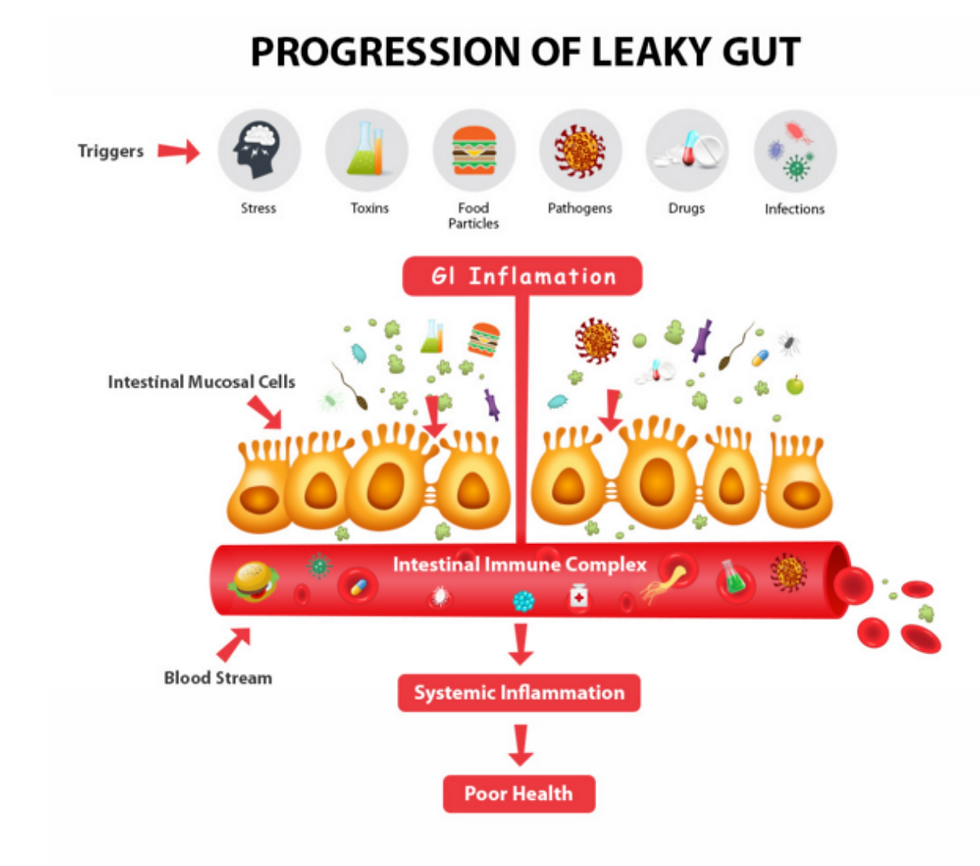Understanding SIBO: Small Intestinal Bacteria Overgrowth
- ella40105
- May 10, 2021
- 3 min read

Healthy small intestine: The small bowel normally contains relatively few bacteria (less than 10,000 bacteria per milliliter of fluid) when compared with the large bowel, or colon (at least 1,000,000,000 bacteria per milliliter of fluid). These bacteria play an essential role in protecting against other pathogenic bacteria and yeast, absorbing nutrients and vitamins, and maintaining motility.
Definition of SIBO: SIBO is defined as an increase in the number of bacteria and/or changes in the type of bacteria present in the small intestine. Most commonly it is an overgrowth of various types of bacteria found in the colon. It can also result from an increase in the normal bacteria of the small intestine, though this is less common. This is part of the reason SIBO can be so hard to treat. Not only are there multiple types of bacteria, many of them are normal healthy bacteria that should be present in the body—just in a different location or in different numbers.
Impacts of SIBO: SIBO has been shown to negatively affect both the structure and function of the small bowel in a number of different ways. It may significantly interfere with digestion of food and absorption of nutrients, primarily by damaging the cells lining the small bowel (the mucosa). This damage to the small bowel mucosa can lead to “leaky gut” (when the intestinal barrier becomes permeable, allowing large protein molecules to escape into the bloodstream). These pathogenic bacteria, whether too many or the wrong types, can lead to nutritional deficiencies on top of those due to poor digestion or absorption. This happens due to the bacteria taking up vitamins and amino acids before our own cells have a chance to absorb these nutrients.
Causes of SIBO: The body has several different ways of preventing SIBO. These include gastric acid secretion (maintaining an acidic environment), waves of bowel wall muscular activity, immunoglobulins in the intestinal fluid, and a valve that normally allows the flow of contents into the large bowel but prevents them from refluxing back into the small bowel (the ileocecal valve). The causes of SIBO are usually complex, and likely affect more than one of the protective mechanisms listed above. A number of risk factors for SIBO have been identified, with some of the more common risk factors listed below.
Low stomach acid
Irritable bowel syndrome (can be both cause and effect)
Celiac disease (long-standing)
Crohn’s disease
Prior bowel surgery
Diabetes mellitus (type I and type II)
Multiple courses of antibiotics
Prior episode(s) of food poisoning potentially leading to disruption of the migrating motor complex
Organ system dysfunction, such as liver cirrhosis, chronic pancreatitis, or renal failure
Symptoms of SIBO:
The most common symptoms of SIBO include:
Abdominal pain/discomfort
Bloating and abdominal distention
Diarrhea
Constipation
Gas and belching
In more severe cases, there may be weight loss and symptoms related to vitamin deficiencies.
Types of SIBO: SIBO can be methane producing, hydrogen-producing, or both.
SIBO associated with hydrogen overproduction: An overgrowth of bacteria in the small intestine may cause hydrogen dominant SIBO. These bacteria cause unabsorbed carbohydrates to ferment before they can be broken down. The fermentation creates hydrogen gas a byproduct. Hydrogen predominant SIBO tends to have diarrhea more commonly.
SIBO associated with methane overproduction: The dominant microorganism in methane dominant SIBO is archaea. Archaea are prokaryotes, which are technically a different class of microorganism than bacteria. These are single celled organisms with no nucleus and no membrane bound organelles. They survive in many extreme environments where there is anaerobic degradation of organic compounds. In the gut they can utilize the hydrogen gas produced by other bacteria and create methane as a byproduct. High methane levels are often associated with constipation, which may be an indicator of this type of SIBO.




Comments